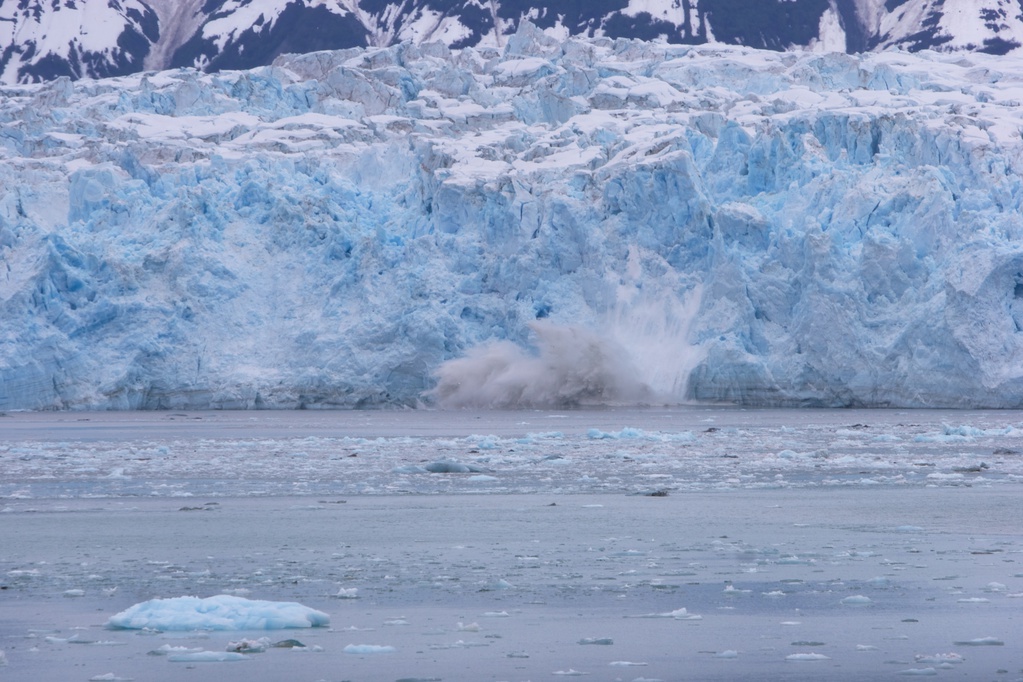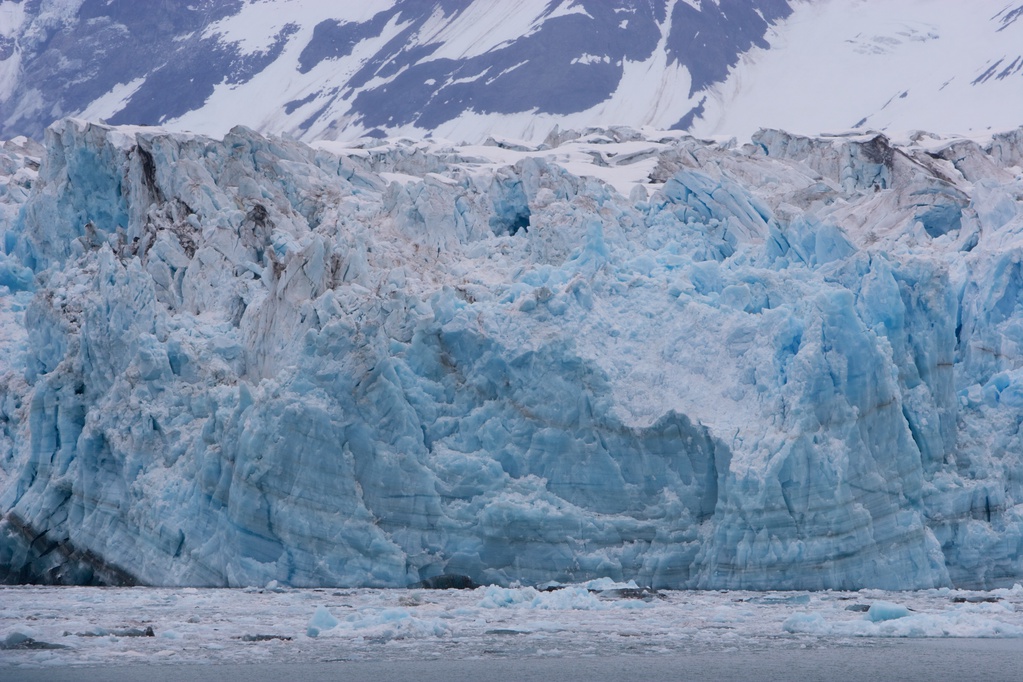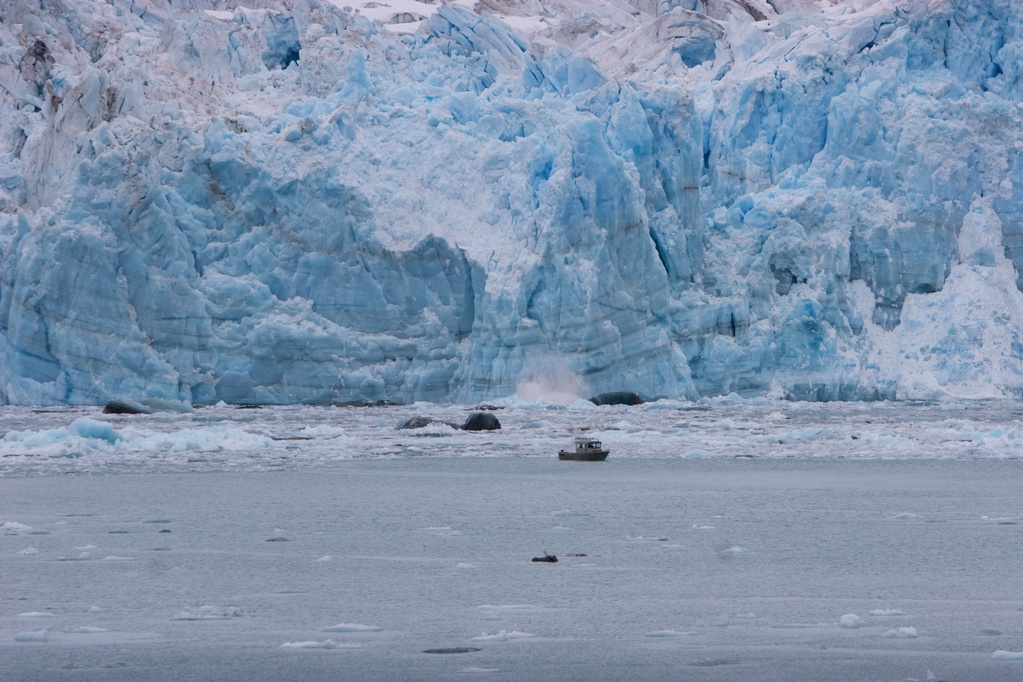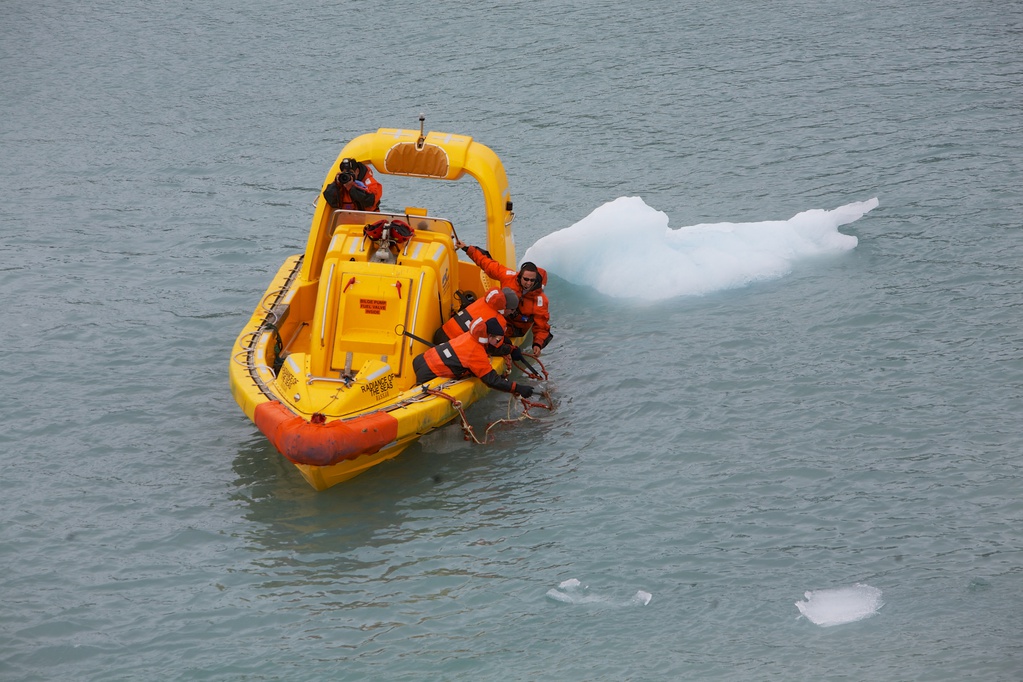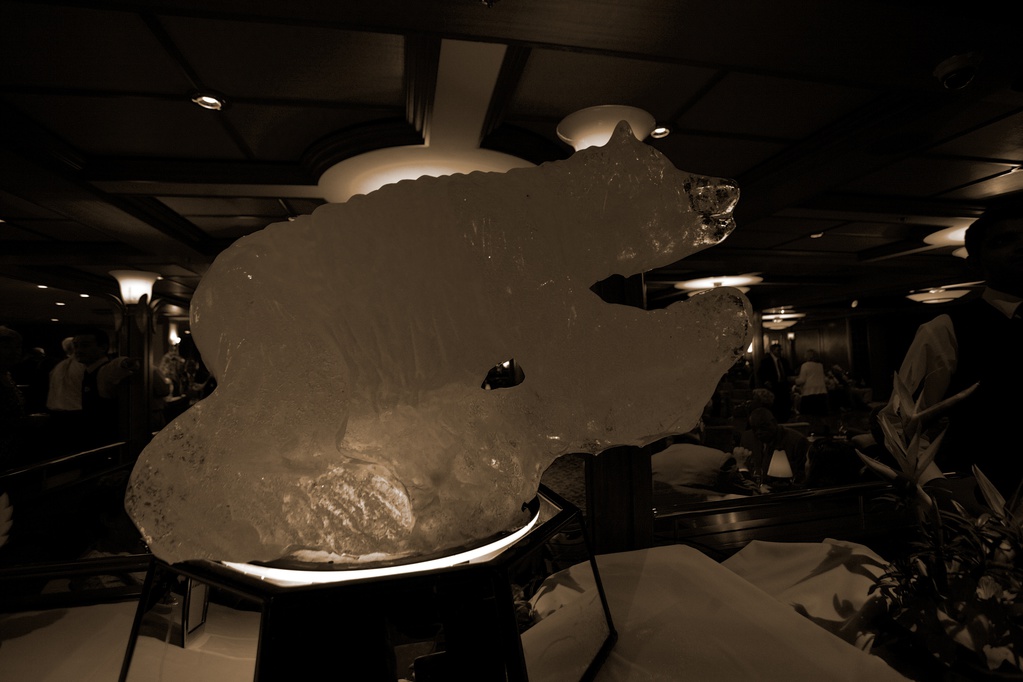In the previous post I hinted that there was a good reason for Radiance to keep a local pilot on board. The first full day at sea brought us to Hubbard Glacier, which is a tidal glacier, meaning that the glacier is moving into the sea as opposed to across land. This means it spends most of its time generating icebergs.
Most of these were small enough to run down with the ship, but some were large enough to make some noise as they broke up against the hull, and others were imposing enough to avoid—a tricky job on an 1100 foot long ship, even with thrusters.
The rest of the time it spends making absolutely biblical noise. The natives call it "white thunder", and I can only describe it as a cross between thunder and an earthquake. Here's a relatively small iceberg being born from the glacier1.
I don't do much post on my photos2, so this glacier really is as blue as it looks here3. It was also enormous; remember that this was shot from six stories above the water—the glacier itself is around 800 feet tall.
The lines in the ice are exactly the same as layers in rock, including the time spans involved. The ice that was falling apart froze before western religions existed.
Roughly the same location, but with a fishing boat for scale.
The safety officer, two crewmen, and the lead photographer went out in the safety boat to retrieve a chunk of the glacier from the waters.
That night, it was the centerpiece at the officers' meet and greet.
1 For the interested, the process is called calving
2 it's worse than just being colourblind, I'm simply terrible at it
3 I'm told the ice is extra dense, and that density makes it extra good at transmitting/reflecting light in the blue range

